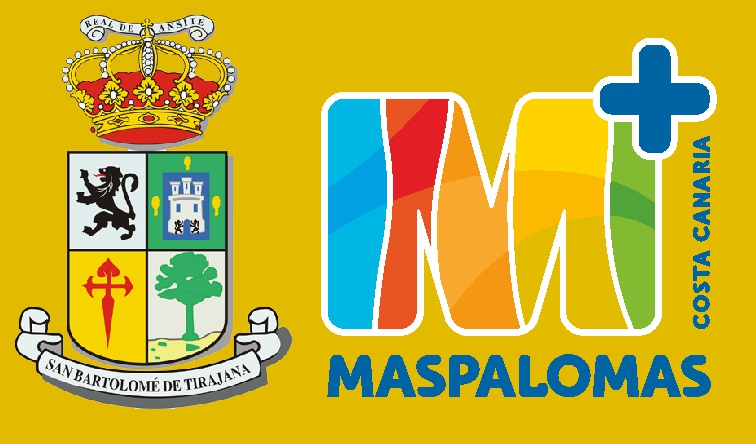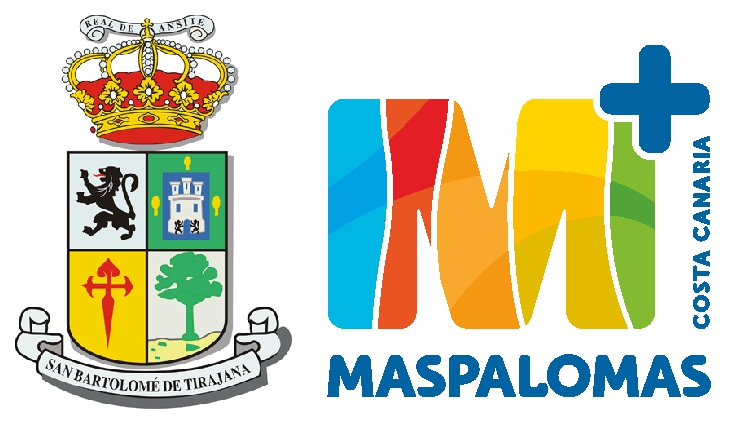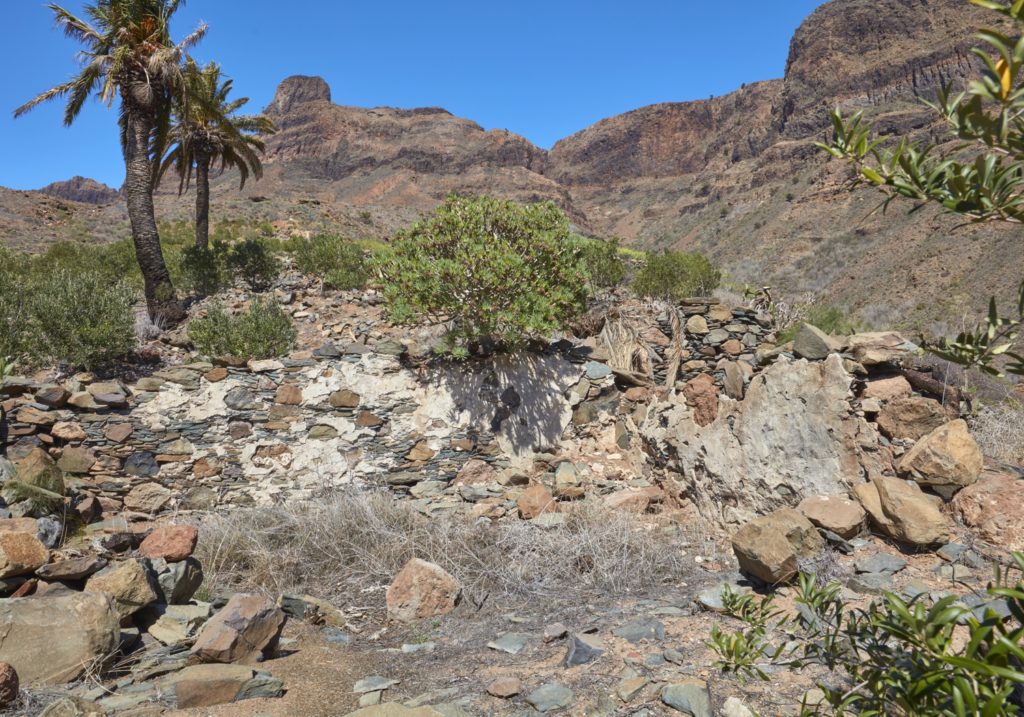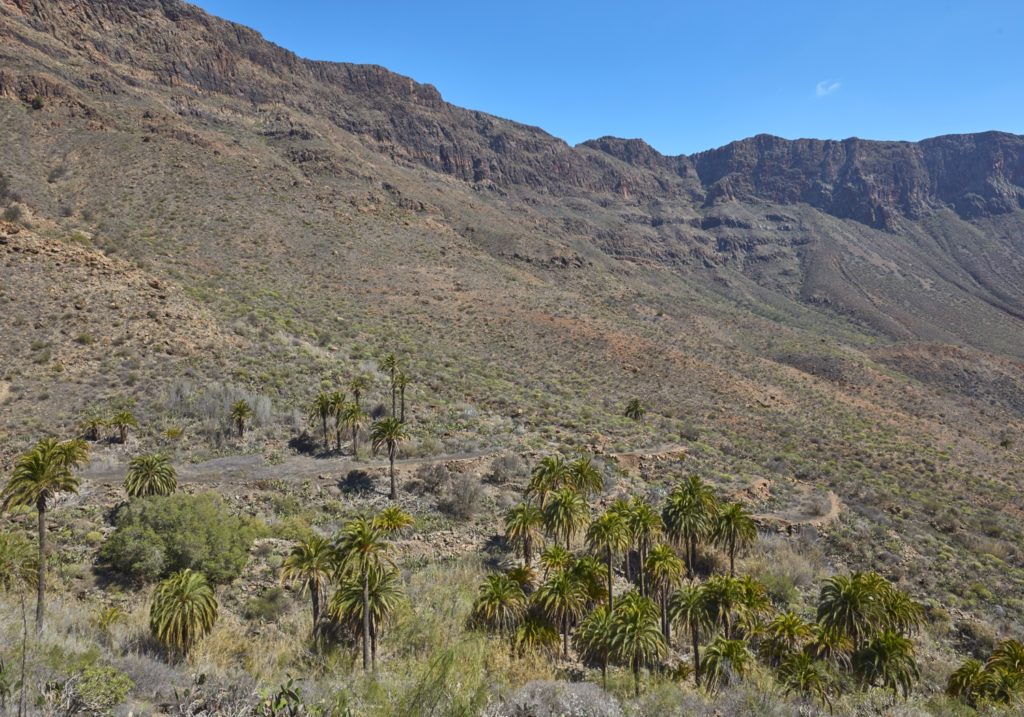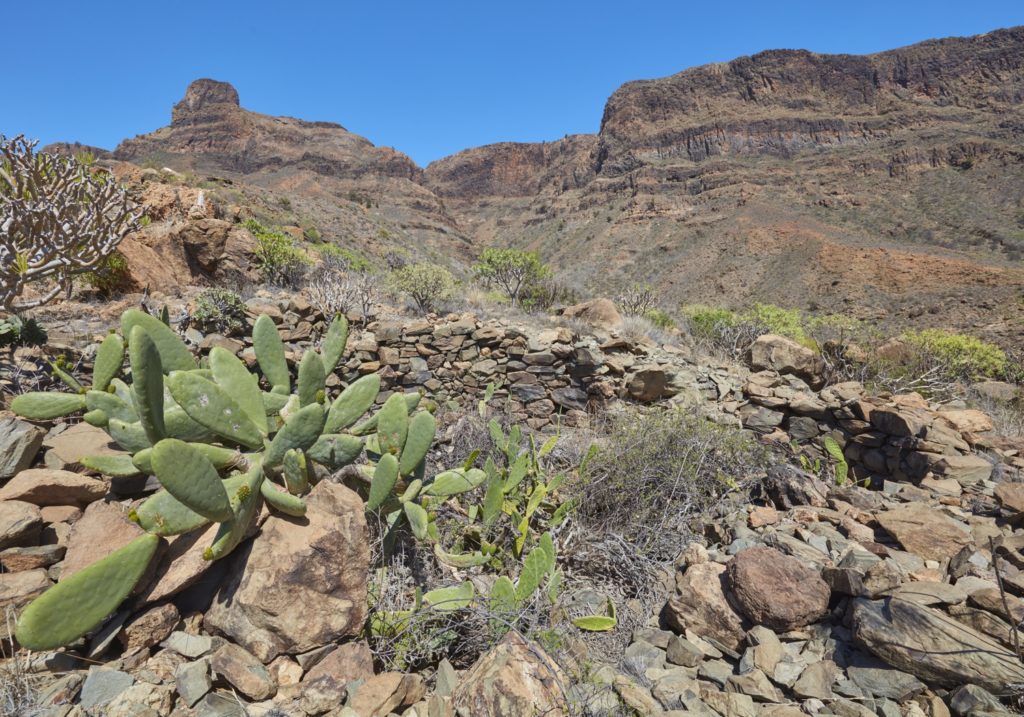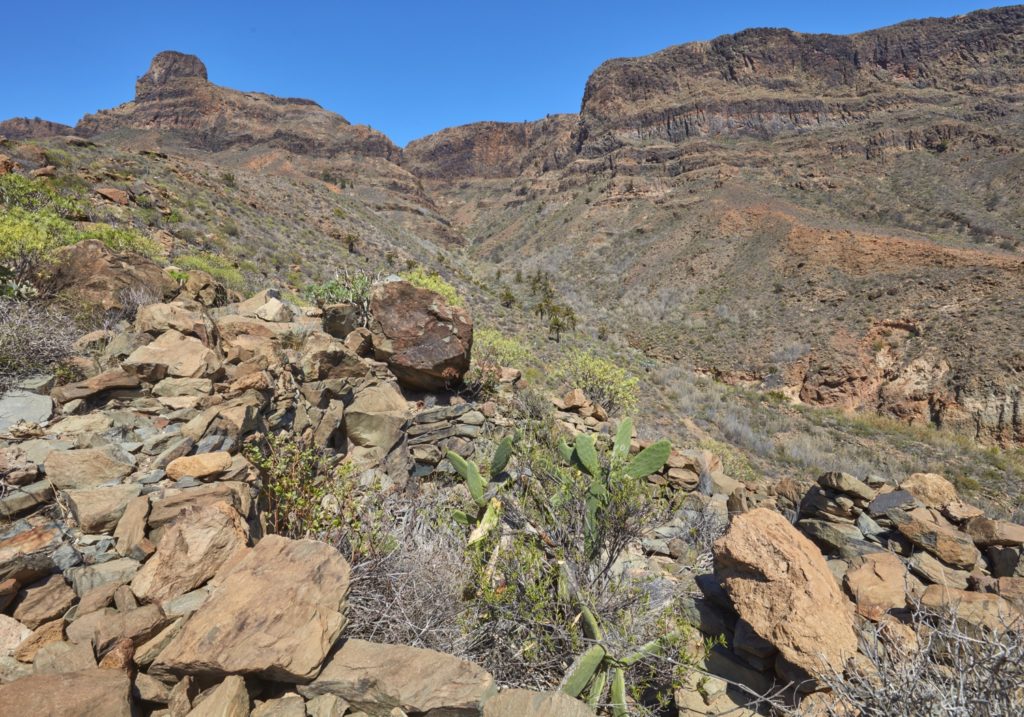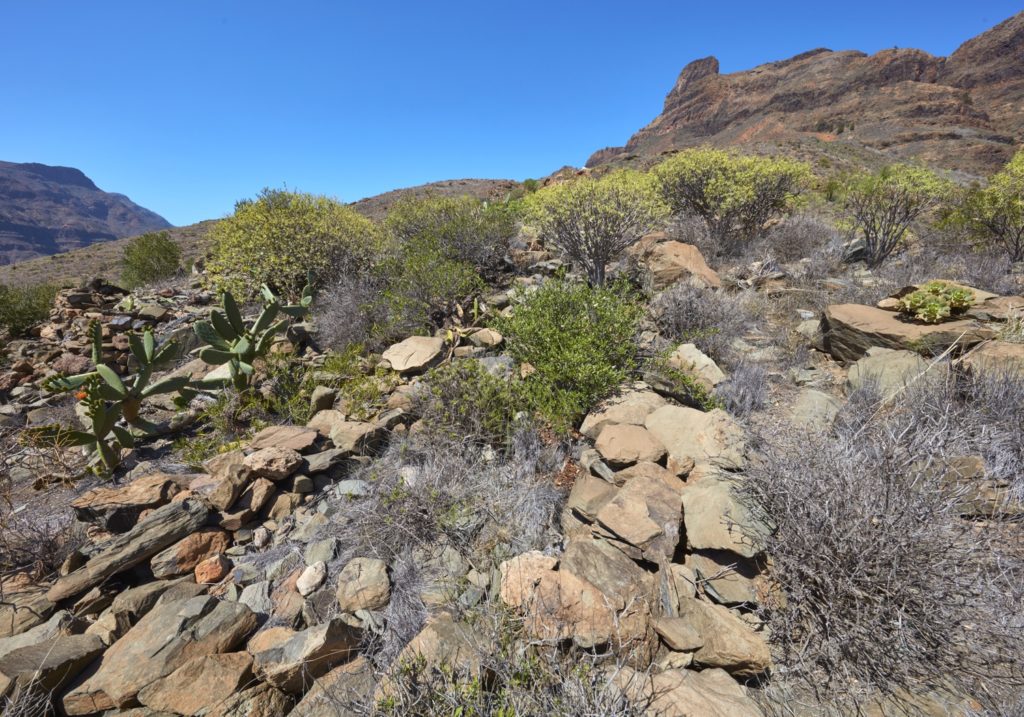Caserones de Fataga
About 3 kilometers from the nucleus of Fataga, on the left bank of the ravine of the same name, is the aboriginal settlement known by the place name of Caserones. It is a housing complex made up of at least ten houses, although it is not possible to rule out that it was originally made up of a higher number.
The complex, nestled in an area with a slight slope, presents cruciform houses with a circular floor plan in most cases, maintaining the elevation of its original walls in optimal conditions of conservation. The canaries proceeded to an accommodation of the walls that form the structures to the irregularities of the terrain, even resorting to the excavation of the soil to achieve this purpose. This has led to their being known as “deep houses”, a term also used in the historical documentation of the 16th and 17th centuries to refer to pre-Hispanic constructions that continue to be used even at that time. The historical texts of the first distributions of land after the Hispanic Conquest, allude to the existence of this type of aboriginal constructions in the place today occupied by the nucleus of Fataga.
Next to the dwellings, large stones with various panels of rock engravings were found. These are of geometric typology, being the incision the most frequent execution technique. In the plain in front of Caserones, in 1998, a huge tombstone full of petroglyphs was found, which is currently kept in El Museo Canario.
The texts on this page are based on the Guide to the Archaeological Heritage of Gran Canaria, edited by the Cabildo de Gran Canaria.
